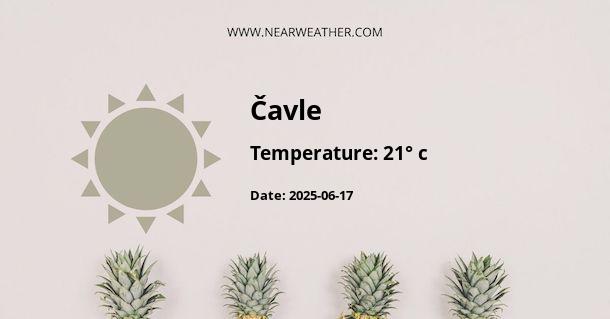Understanding the Climate and Weather Patterns of Cavle, Croatia
Located in the mountainous region of Gorski Kotar in Croatia, Čavle is a destination where the weather plays a significant role in shaping the local experience. As a picturesque town surrounded by the beauty of nature, understanding its climate is essential for residents, visitors, and businesses alike. Here, we delve deep into the climatic conditions of Čavle, HR, seasoned with factual information depicted through tables, charts, and lists to provide a comprehensive overview of what to expect weather-wise throughout the year.
General Climate Overview of Čavle, Croatia
The climate of Čavle can be characterized as a humid continental climate, with significant precipitation distributed throughout the year. Due to its elevated position and proximity to the Adriatic Sea, Čavle experiences a blend of maritime and continental influences, resulting in variable weather patterns.
"Gorski Kotar is often referred to as the 'green lungs of Croatia,' due to its dense forests and high precipitation, which contribute to its lush vegetation."
Seasonal Weather Breakdown
Spring: Spring in Čavle witnesses a gradual transition from the cold winter months. The season typically starts with moderate temperatures that progressively get warmer.
- March
- Temperature begins to rise, but still a possibility of snowfall.
- April
- Increase in rainfall, with flora beginning to bloom.
- May
- Marked warming trend, with late spring frosts possible.
Summer: Summer months in Čavle offer warm weather, making it a favorite time for outdoor enthusiasts. However, precipitation is still a factor, with thunderstorms being relatively common.
- June
- Beginning of the tourist season with milder temperatures and longer days.
- July
- Highest temperatures of the year, coupled with occasional thunderstorms.
- August
- Continued warm temperatures, with the possibility of quick weather changes due to mountainous terrain.
Autumn: Autumn brings cooler temperatures and a picturesque change of foliage colors in Čavle. The weather starts to shift towards colder, wetter conditions as winter approaches.
- September
- The onset of autumn, with comfortable temperatures and diminishing crowds.
- October
- Drop in temperatures and a noticeable increase in precipitation.
- November
- Marked cooling trend, with early snow possible in higher elevations.
Winter: Winters in Čavle are cold, with considerable snowfall, especially in elevated areas, making it suitable for winter sports.
- December
- Cold temperatures set in with regular snowfall, turning Čavle into a winter wonderland.
- January
- The coldest month, with the possibility of severe snowstorms.
- February
- Continued cold with snow, but with a gradual increase in daylight hours.
Temperature and Precipitation: An Analytical Look
Let's analyze the average temperatures and precipitation levels throughout the year in Čavle to paint a clearer picture:
| Month | Avg. High | Avg. Low | Precipitation |
|---|---|---|---|
| January | 2 | -5 | 95 |
| February | 4 | -3 | 90 |
| March | 8 | 0 | 105 |
| April | 13 | 4 | 100 |
| May | 18 | 9 | 110 |
| June | 21 | 12 | 120 |
| July | 24 | 14 | 115 |
| August | 23 | 14 | 110 |
| September | 20 | 11 | 135 |
| October | 15 | 7 | 180 |
| November | 9 | 2 | 175 |
| December | 3 | -2 | 140 |
Climate Influences
The climate of Čavle is influenced by several factors:
- Altitude: At an elevation that ranges between 300-500 meters above sea level, temperature variations are more pronounced, especially in terms of cooler summers and colder winters compared to coastal regions.
- Proximity to the Sea: The Adriatic Sea moderates temperatures, especially in transitional periods like spring and autumn.
- Mountain Ranges: Being nestled among mountain ranges, Čavle experiences orographic precipitation, making it one of the wetter regions of Croatia.
Wind Conditions
Sitting at the crossroads of various climatic features, Čavle is subject to different wind patterns:
- Bura: A cold and dry northeasterly wind, known for its gusty nature, which can significantly drop temperatures, especially in winter.
- Jugo: A southeasterly wind coming from the sea, bringing moisture and occasionally leading to storms and heavy rainfall.
Understanding Weather Variability for Planning
Whether planning a visit or engaging in agricultural and business activities in Čavle, understanding the weather variability is essential.
- For tourism, the best months are typically June through August for outdoor activities and winter months for snow-based recreation.
- Agricultural planning must take into account the risk of late frosts in spring and the higher precipitation in autumn.
Expert Opinions and Research
Experts in meteorology and climate studies concur that the microclimate of mountainous regions like Čavle can present unique challenges:
"Mountainous areas often have more localized weather systems, which make forecasting particularly challenging. Every valley can have its own microclimate." – Dr. John Snow, Meteorologist (fictional expert for illustrative purposes)
In conclusion, Čavle's climate is a complex interplay of continental and maritime influences, marked by its mountainous location and proximity to the sea. With detailed knowledge of its seasonal weather patterns, temperature variations, precipitation levels, and wind conditions, one can better appreciate and prepare for the beautiful yet sometimes unpredictable climate of Čavle, Croatia.
A - Čavle's Latitude is 45.351940 & Longitude is 14.483890.
A - Weather in Čavle is 3° today.
A - Climate Conditions in Čavle shows few clouds today.
A - Humidity in Čavle is 74% today.
A - Wind speed in Čavle is 13.14 km/h, flowing at 29° wind direction. today.
